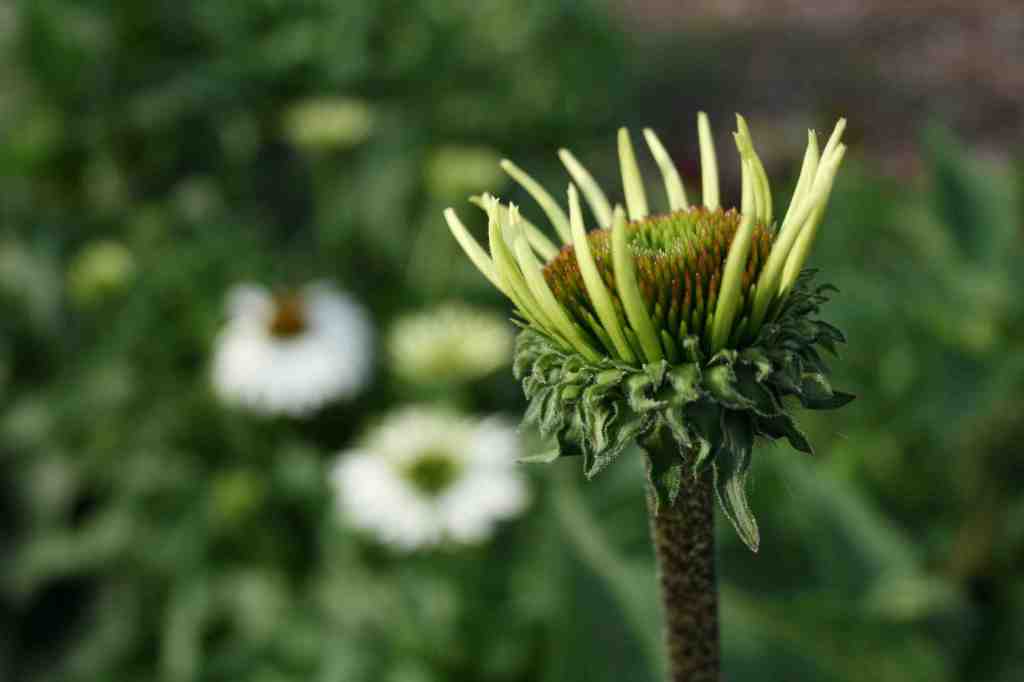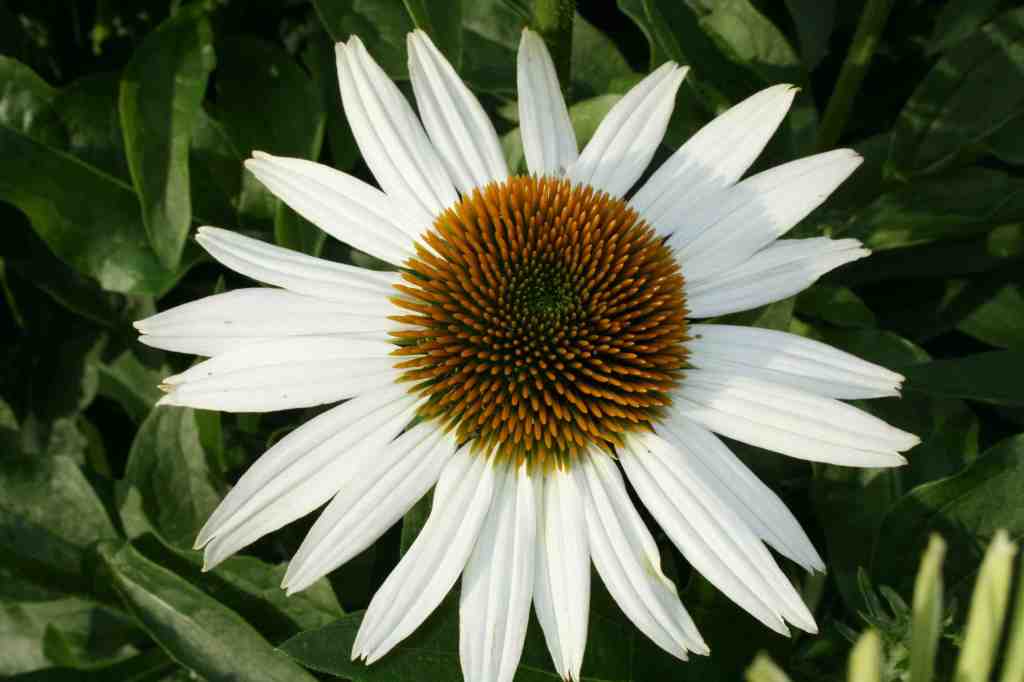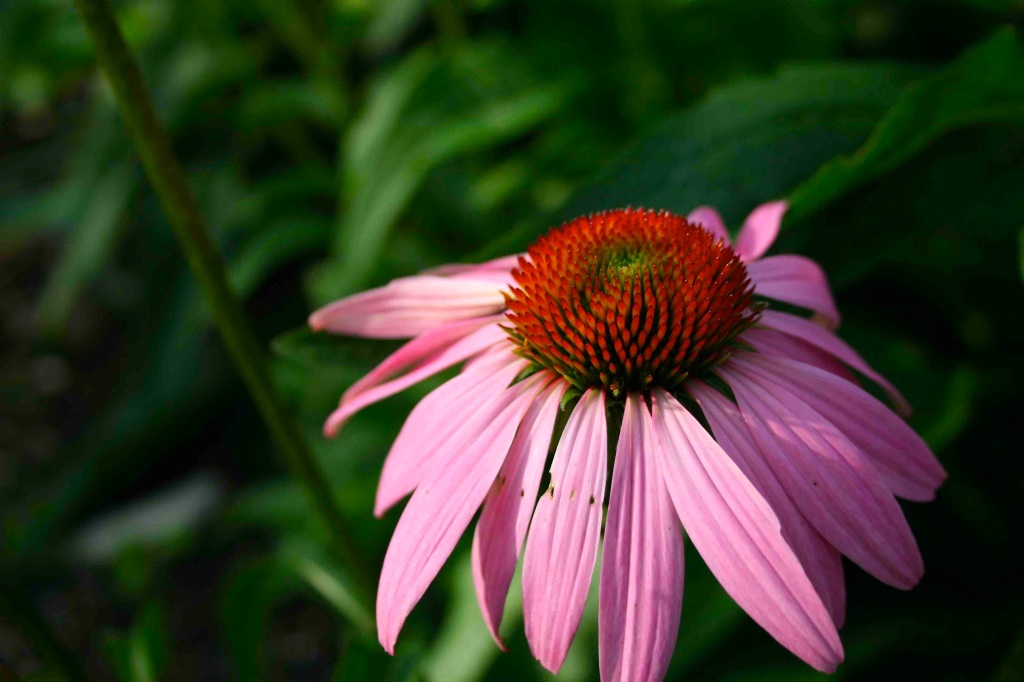Coneflower Chorus
Photos & text by Albert Brian Vick, Lewis Ginter Botanical Garden, Community Kitchen Garden Coordinator
We’ve thoroughly enjoyed our ad hoc trials with companion plants here in the 2012 Lewis Ginter Community Kitchen Garden. Although we’re not yet capable of quantifying the companion plant benefits within our Integrated Pest Management strategy, the anecdotal experience has been very positive. We’ve grown numerous herbaceous plants specifically to attract beneficial insects, and hopefully to deter a few pests. The list is long, and will likely be much longer in 2013. The beauty – and fragrance – of these plants has been rewarding: basil, parsley, chives, dill, tansy, marigolds, salvia, artemisia, eucalyptus, zinnia, nasturtium, and the current star: Echinacea purpurea (coneflower). A North American native and member of the Aster family, Echinacea purpurea is commonly a purple flower – but we’ve also grown some with white flowers. The herbal suppliment Echinacea – purported to boost the human immune system – is derived from this genus. The clinical evidence proving medical benefits is conflicting, but we do know coneflowers attract butterflies and bees.
The pink/purple version has a flaming orange-red center.

The flower spikes are attractive in all stages. Here the petals are just emerging.

